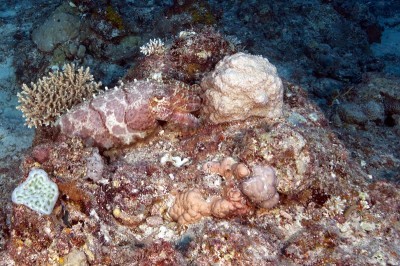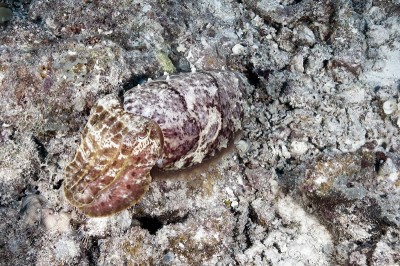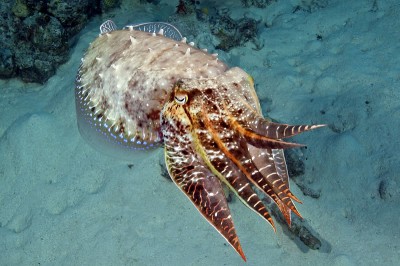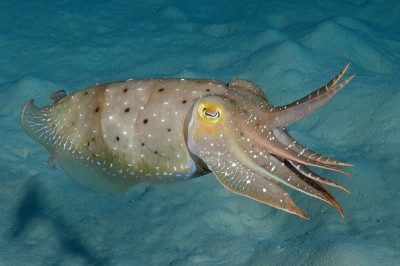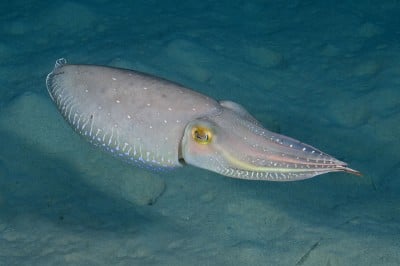The Broadclub Cuttlefish (Sepia latimanus)—the second largest species of cuttlefish (to 50 cm)—is the most commonly seen species of cuttlefish on tropical reefs. Though it ranges from the Andaman Sea in the west to as far east as Fiji, this is the first time during the Global Reef Expedition that we’ve encountered them during our survey work. As this species is a master of camouflage it’s not surprising that they have remained elusive. When at rest they can assume mottled color patterns and even contract their skin to raise small tabs on their bodies to give it a rough texture.
The Broadclub Cuttlefish is a master of camouflage blending in with its surroundings.
(Click thru on images for greater detail.)
Cuttlefish and other cephalopods (octopus and squid) can consciously control their color and markings by contracting or relaxing special pigmented cells in their skin called chromatophores. In addition to using colors and patterns for camouflage, a cuttlefish can signal its mood when trying to attract a mate or defend one from a rival male during courtship. When hunting small crustaceans or fishes they can produce a rhythmic pulsation of darkened bars that travel the length of their bodies. This may serve to mesmerize their prey. The speed at which cuttlefish can change their coloration is remarkable and always makes encountering one on the reef a great treat.
Images of the same individual taken mere seconds apart as it abandons its camouflage and pales while heading out over a sandy area.
(Click thru on images for greater detail.)
Photos by Ken Marks.
